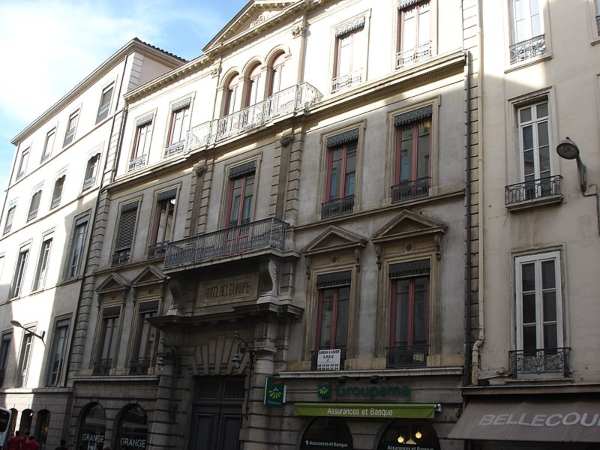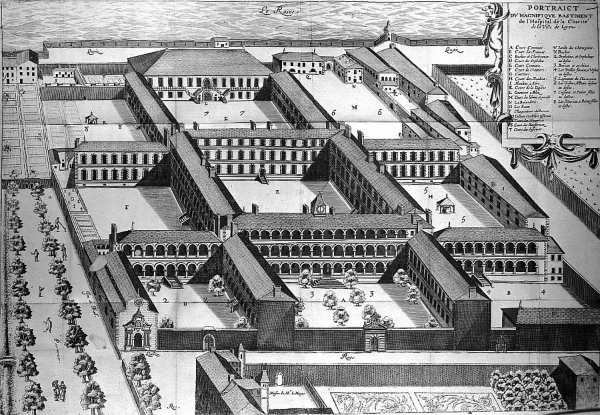- 1 Rue Colonel Chambonnet, 69002 Lyon
- What you see
- What you need to know
The Hôtel de l'Europe, originally known as the Hôtel de Senozan or Hôtel de Montribloud, was built in 1653 by Girard Desargues for Pierre Perrachon de Saint-Maurice.
17th century: It passed through different owners and underwent structural modifications, notably additions of buildings by the Olivier de Senozan family at the beginning of the 18th century.
French Revolution: After the Revolution, the hotel was converted into a hotel for travelers. It gained fame by welcoming prestigious travelers.
19th century: During this century, the hotel hosted many notable personalities, such as members of royal families, artists, and political figures. However, at the beginning of the 20th century, its hotel activity declined.
1996: The Hôtel de l’Europe is listed as a historic monument under the reference PA00135657. Restoration work is being undertaken to preserve its original architectural elements.
Currently: After its renovation, the hotel has been transformed into a tertiary activity center, including housing, offices and shops.
- Archive images
More photos and information HERE
- A worldwide reputation and the presence of illustrious clients.
In the Traveler's Guide to Lyon, or Lyon ancien et Lyon moderne, by Jean Lyons, published in 1838, the Hôtel de l'Europe is listed as the first among the city's hotels:
"The most famous is without a doubt the Hotel de l'Europe near Place Bellecour. This is where distinguished foreigners, princes, etc., prefer to stay. This hotel is magnificent and of immense size."
Among the famous personalities who have stayed there are:
- Talleyrand in 1801,
- Charles IV, King of Spain, in 1802,
- Russian princesses in 1805,
- the tragedians Talma and Rachel,
- Madame Récamier from June 1812 to spring 1813;
- Napoleon himself, on the night of March 10, 1815, after his return from the island of Elba, stopped there.
- The Duke of Orleans chose it during his visit to Lyon on December 3, 1831.
Later, under the Second Empire, the hotel welcomed a series of illustrious personalities:
- the Duke of Aumale,
- Napoleon III himself,
- King Alfonso XII of Spain,
- the Burmese ambassador, Mérimée and even the Emir Abd el-Kader,
- or, in 1857, Maximilian II, King of Bavaria.
- protected elements
Protected features include a coffered ceiling room on the first floor with its decor, a salon designated as Minerva's on the second floor, also with its decor, and a salon identified as Hercules', also on the second floor, with its decor.
This protection was granted by decree of 10 September 1996. It should be noted that this protection applies to the hotel as a whole, with the exception of the interiors corresponding to the roof extensions and parts already classified. This provision was also established by decree of 10 September 1996.





